Let’s start 2016 with a favorite: white ironstone. For those unfamiliar, read on. Just a warning: this white-on-white craze is highly addictive…..take it from this China boy!
What is ironstone? It is a type of heavy pottery or earthenware with exceptional strength, hence the iron in the name. The all-white glazed form became known as white ironstone.
This durable china was first produced in England during the early 1800s. Without complex color schemes, it became easy and inexpensive to manufacture. Soon other European nations started churning out these humble dishes meant for everyday use. Think of them as the Tupperware of the 19th century. England was the top producer with much of it shipped as ballast to the Americas; they coined it “cheap china for the colonies!” Finally in the late 1800s, the Americans created their own versions.
Nearly all the English export came from the potters in Staffordshire County. Their wares were clearly marked, and have a distinctive bluish tinge to the glaze. Most that remained in Europe are creamier. If starting a collection, decide which you’d like to focus on as the various shades can clash. Some buying and handling tips:
-Inspect for damages such as chips, cracks and repairs (usually at handle joints, finials, highpoints, spouts, etc.).
-Learn the difference between cracks vs crazing. The latter is a glaze defect with a network of allover crackling.
-Expect to pay between $15 – $1,500 for an item in good condition.
-Wash with lukewarm water; avoid extreme temperature fluctuations to prevent cracks.
-Never put in dishwasher or microwave.
-Try not to pick up heavy pieces by the handle(s) alone; also support the base.
Most importantly, use and enjoy your pieces. They are not precious finery meant to collect dust in the vitrine cabinet. Footed bowls elevate boring veggies to new heights. Cakestands are for more than cakes; cheese, hors d’oeuvres, pies and cookies presented on cakestands become irresistible. Even common carnations in pitchers look like heirloom flowers fresh from the garden. By the way, tureen bases, in addition for food, make charming vessels for floral or fruit centerpieces. With a bit of care, these dishes that once graced early tables can be a part of daily life once again.
How to start a collection? Pick a pattern such as the wheat shown above. Or, focus on a particular shape like these angular ones.
Perhaps start a group of pitchers? They are extremely popular for flowers, and understandably so. Their simple form allows any arrangement to shine. Look how pretty the pink peonies, carnations and roses are in this classic-shaped ewer – so effortless, too!
Shifting to Continental European pieces, notice the color is creamier on this unusual watering can with stainless steel trim. Compare it to the Staffordshire leaf dish (made for relish). Also the tall jug, banded bath and graduated compotes (below) are all a warmer white.
Instead of the expected books in this Swedish Gustavian secretary from the 1790s, I’ve tossed in jugs, tureens and vessels for a casual look that’s less predictable. Notice the china is unified by their rounded form. White ironstone mixes beautifully with Swedish antiques.
Another rarity: a Belgian inkwell made by Boch. It sits on Swedish chest with a drop-top first drawer fitted with mini drawers for jewelry. Next to the chest is a curvilinear clock from Mora, Sweden.
Our home is graced with a formal dining room complete with 10′ ceiling and an oversized fireplace. But, with a set of slipcovered chairs, whitewashed table, stripped pine cupboard, sisal rug and grouping of ironstone, that room went from serious to summery.
A gathering of white ironstone fills our Ca. 1790s pine corner cabinet with casual charm. Note the scarce toddy bowl (center of bottom shelf) made for hot toddy – a drink with boiling water, liquor, honey as well as spices. Toddy bowls resemble punch bowls, except the former have lids to keep the beverages toasty plus handles for safely transporting such hot contents.
All lined up for their seasonal cleaning. Next to the toddy bowl is a showy covered slop jar that was once part of a chamber set.
Speaking of a chamber set, an English Regency washstand in our guestbath holds an ewer and basin, also from such a set. The pattern is Fuchsia. More from Maine very soon.
Below is a banded footbath that sold at our shop. Footbaths make fabulous cachepots for plants as well as holders for magazines, etc.
Happy hunting!
Cheers,
Loi

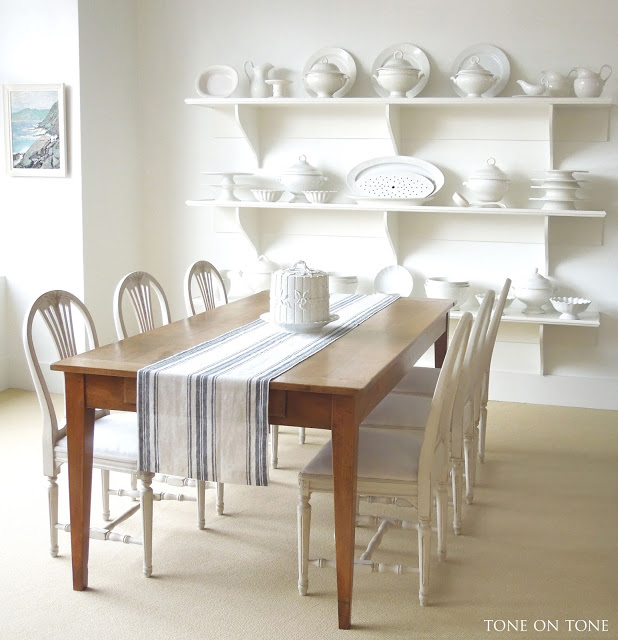
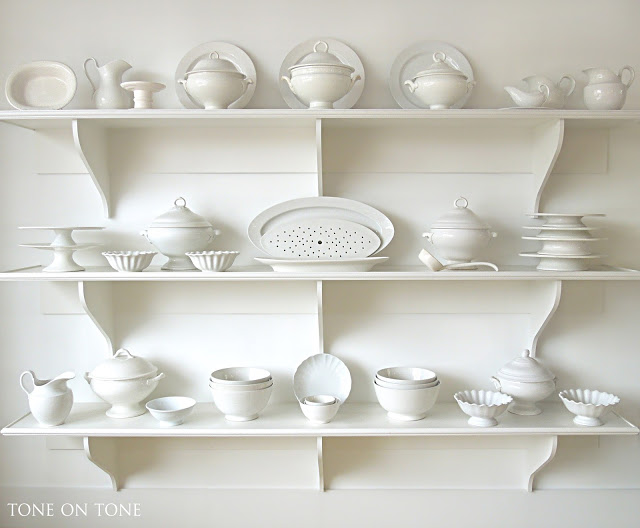
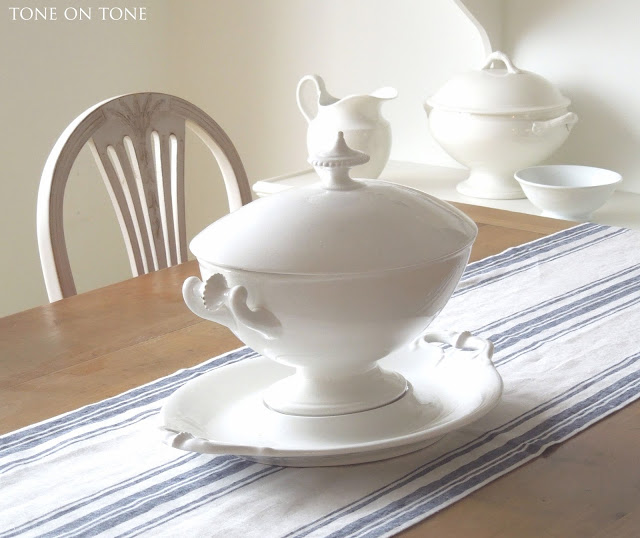
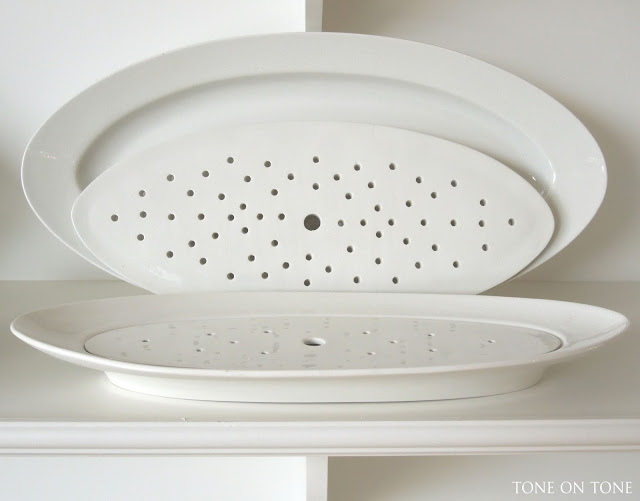
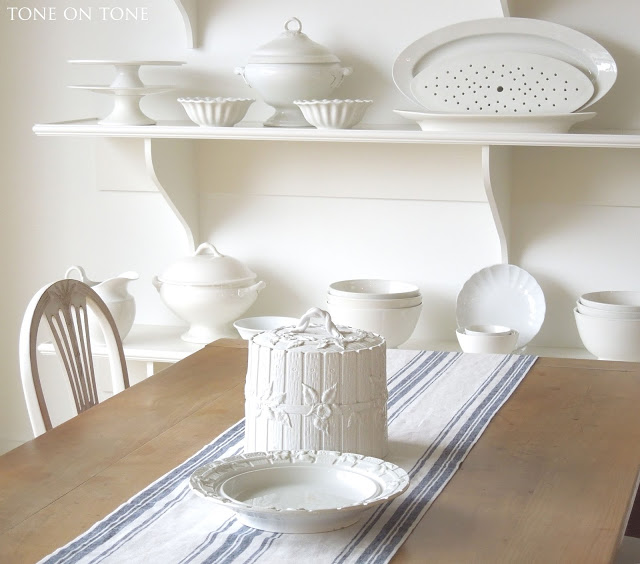
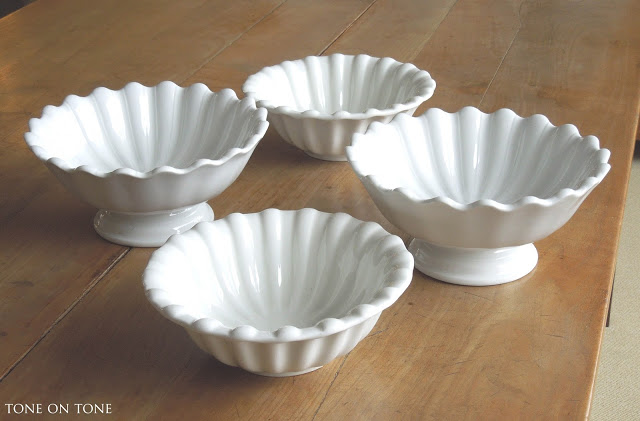
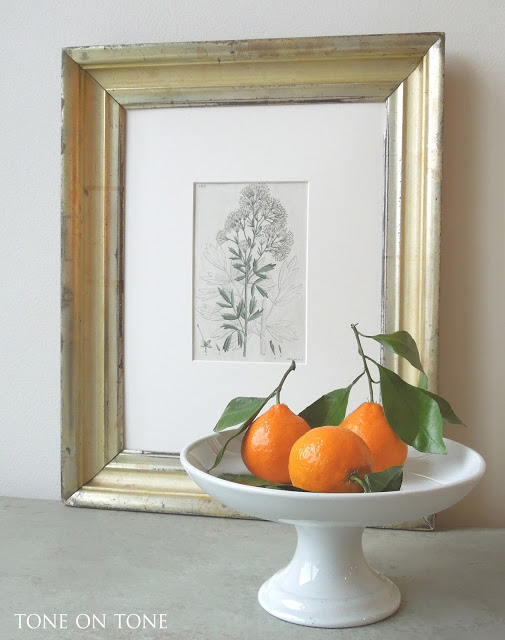
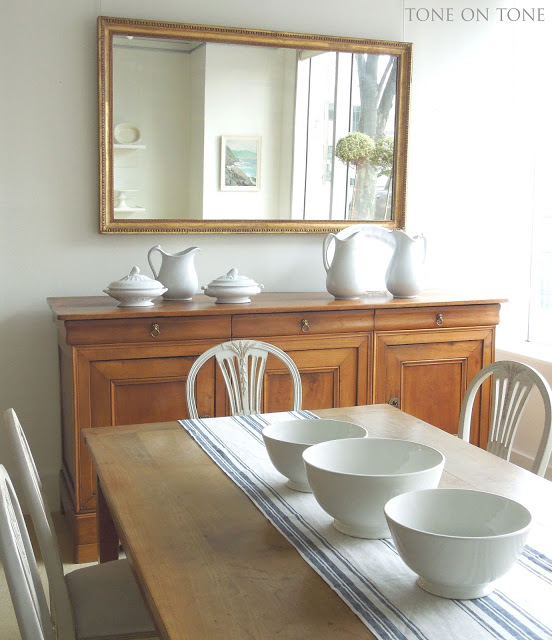
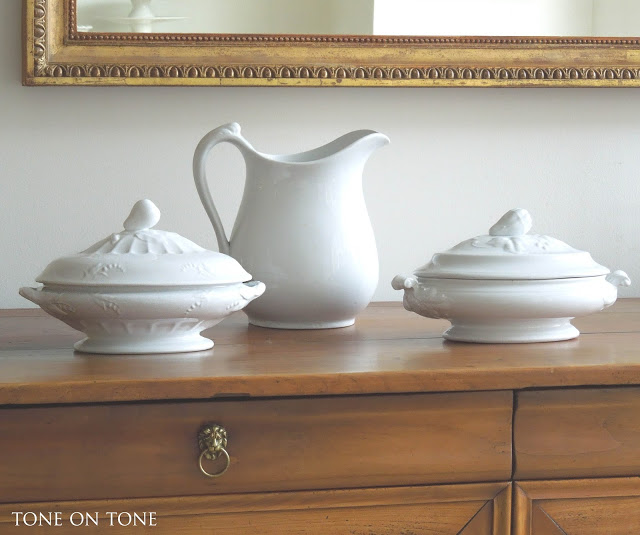
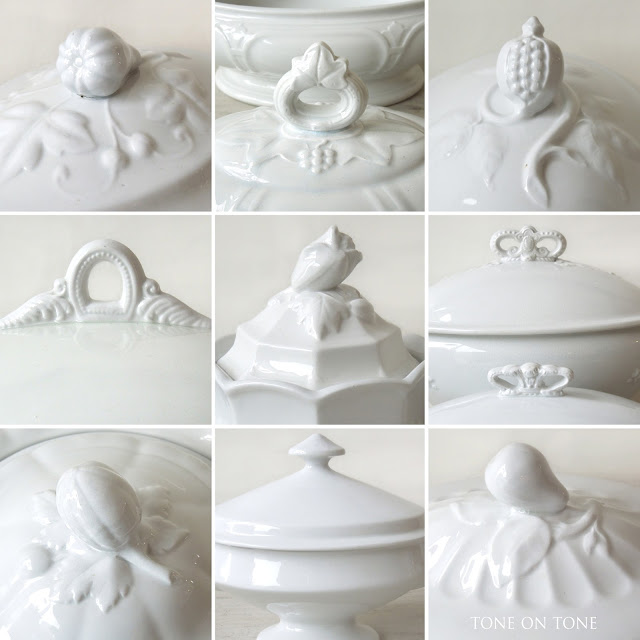
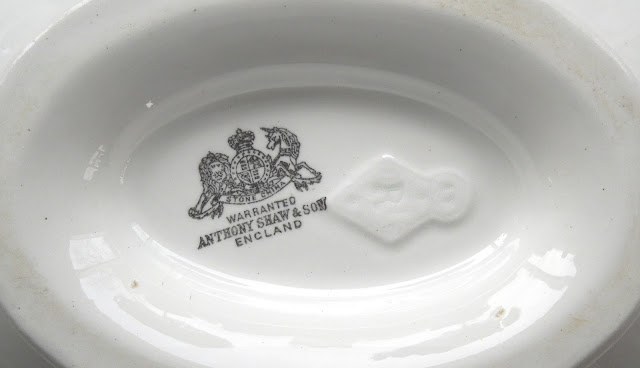
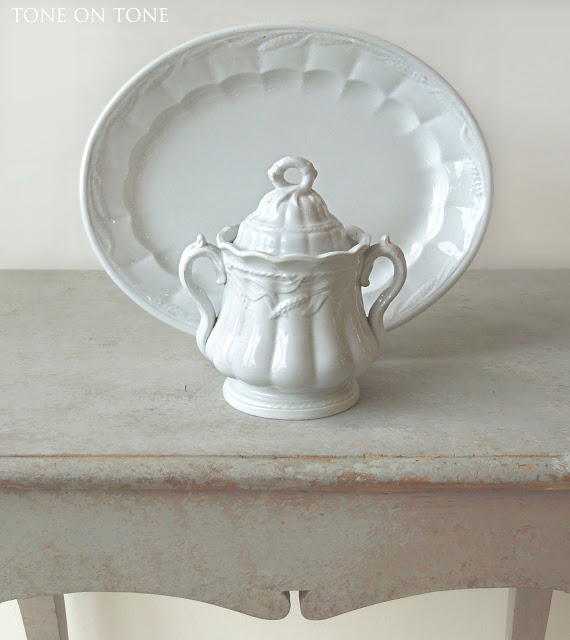
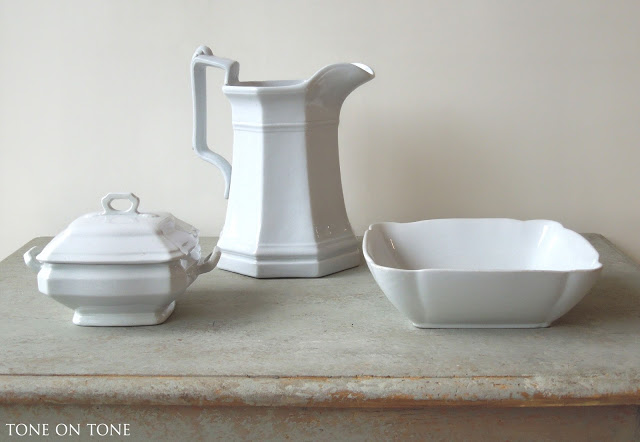
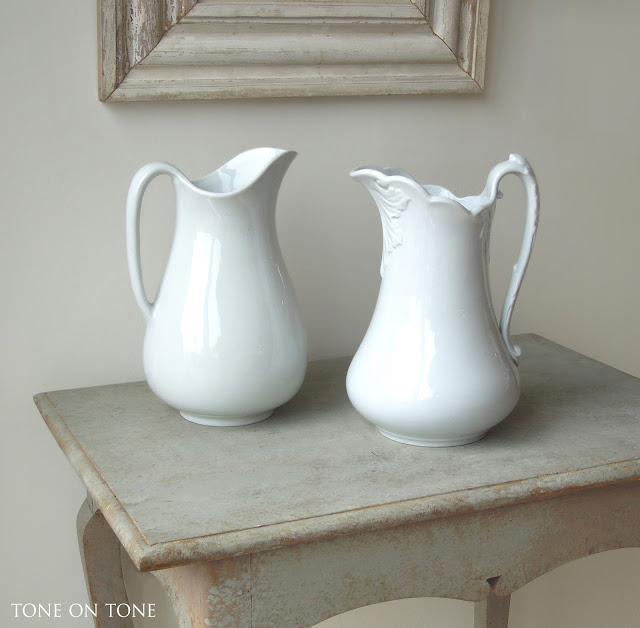
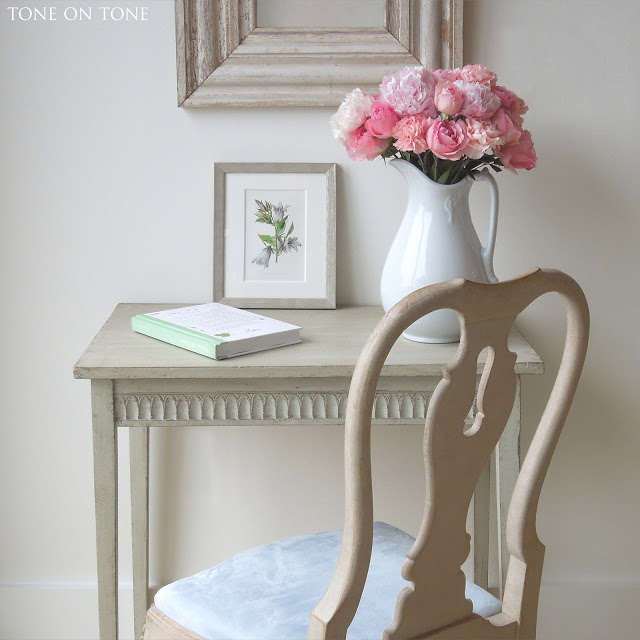
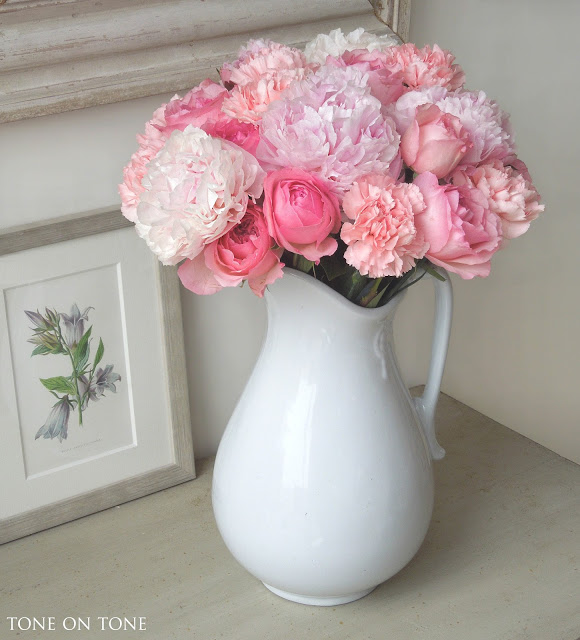
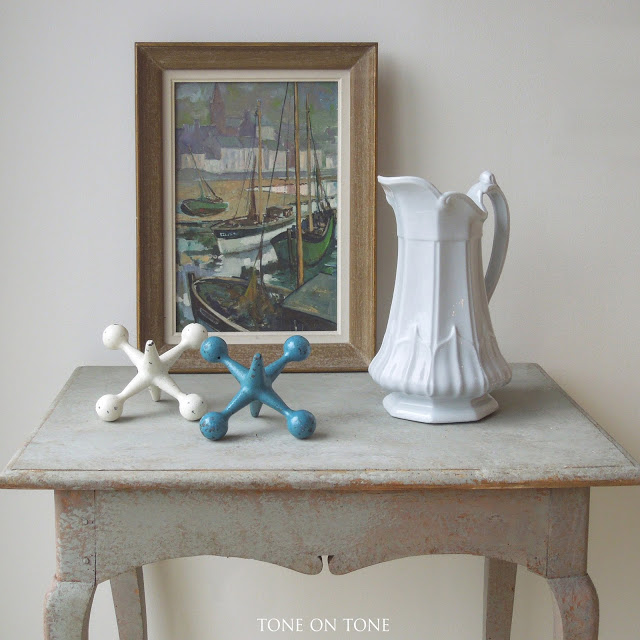
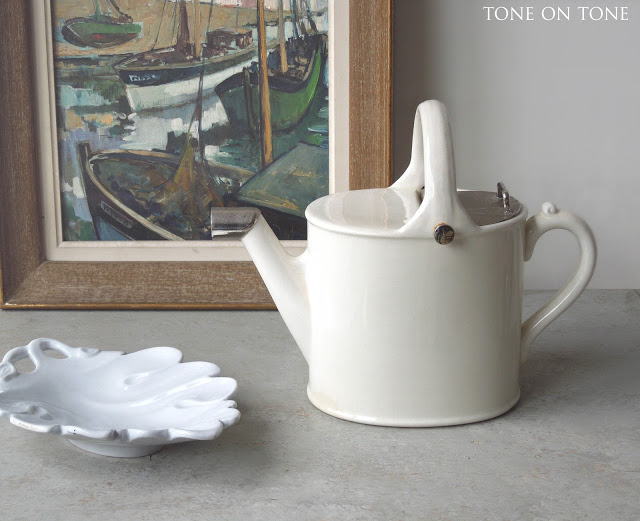
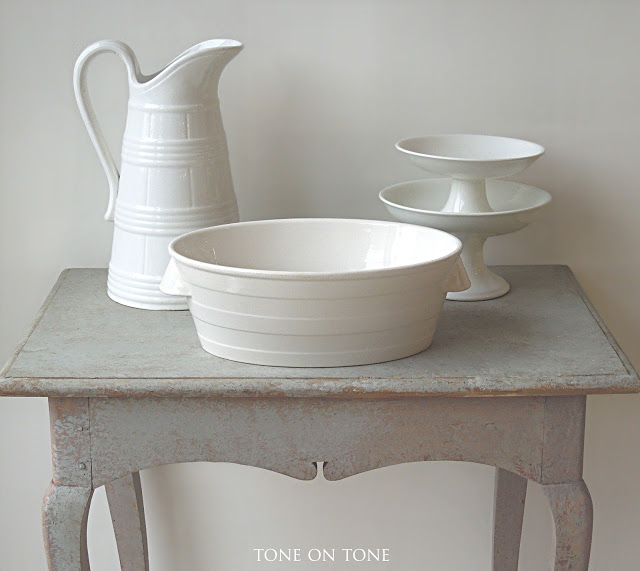
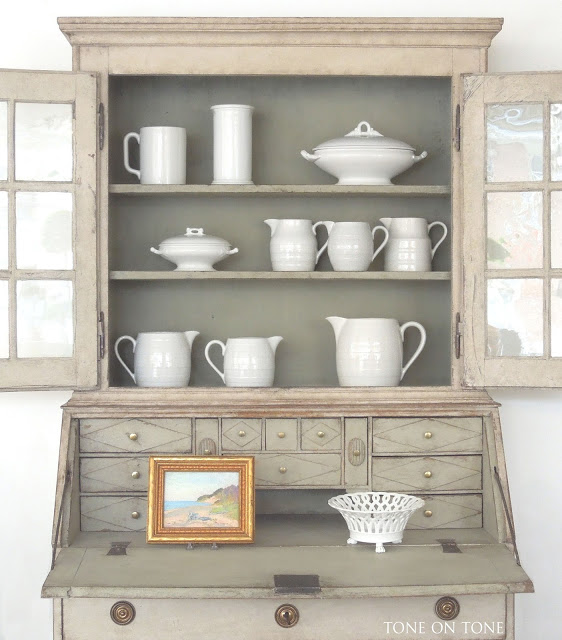
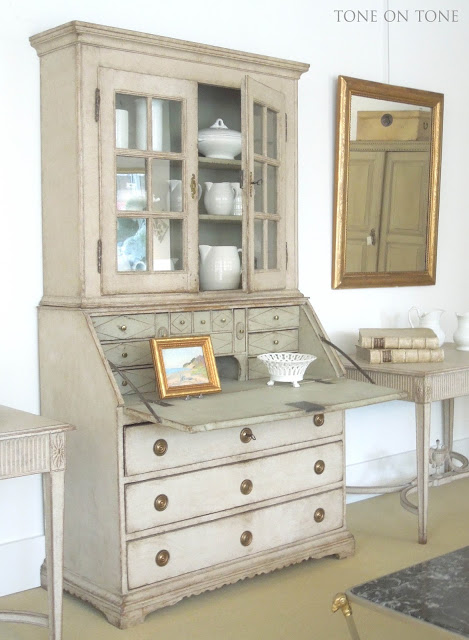
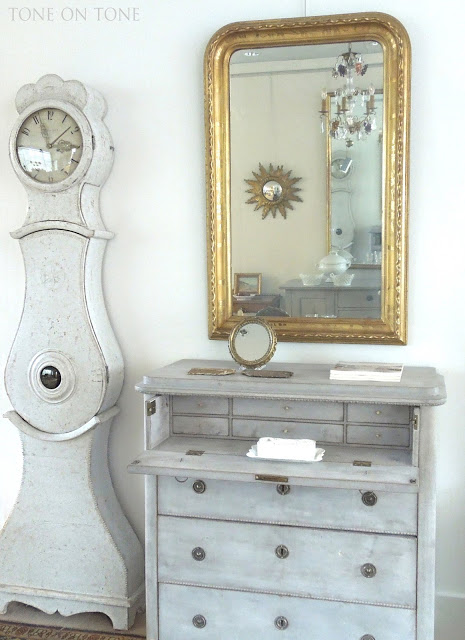
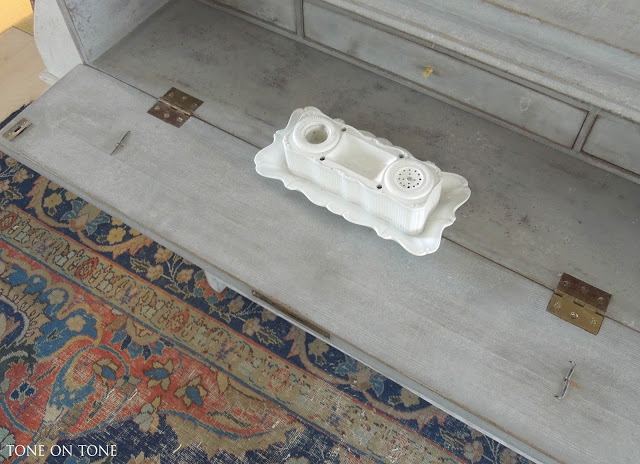
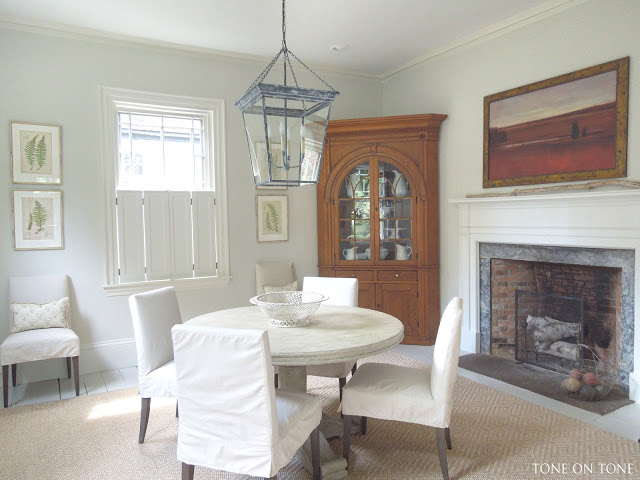
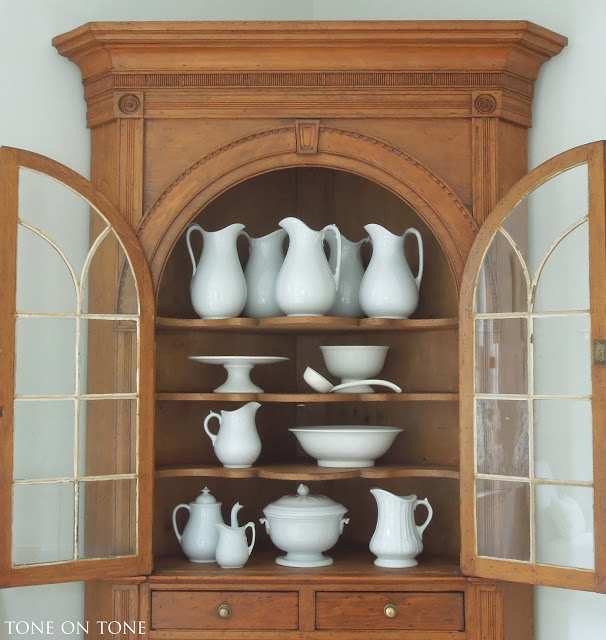
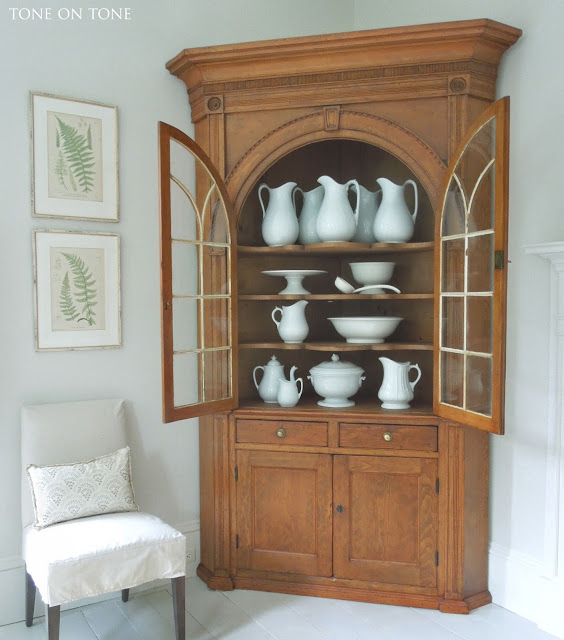
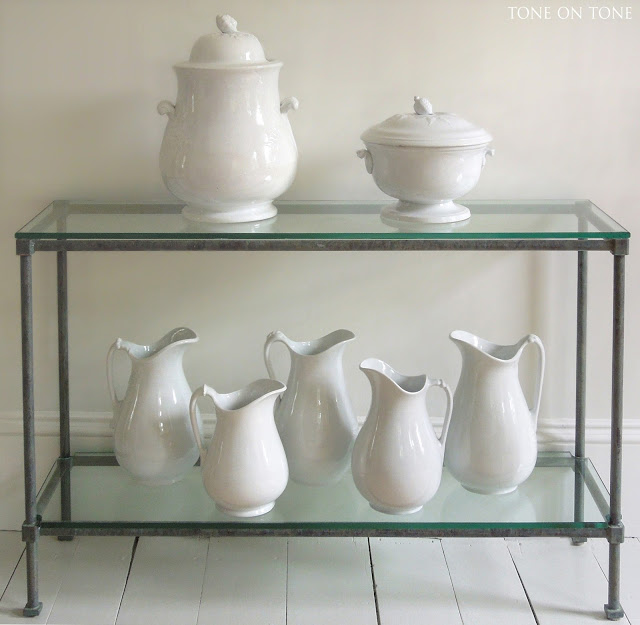
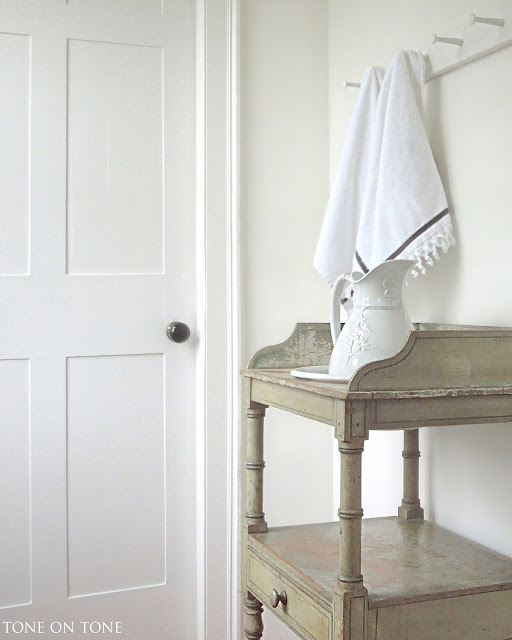
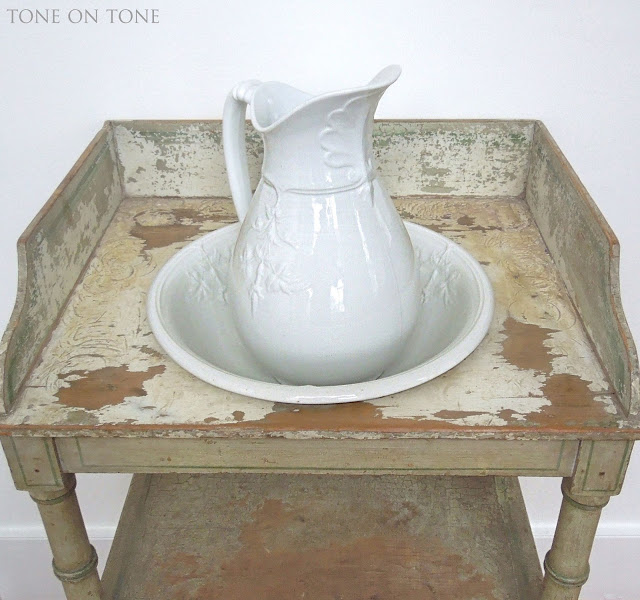
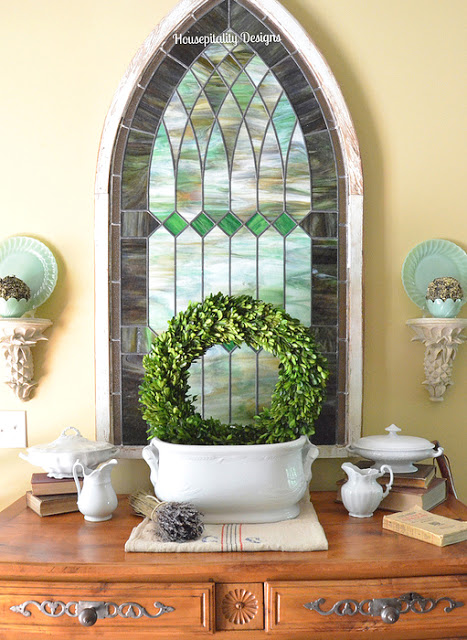
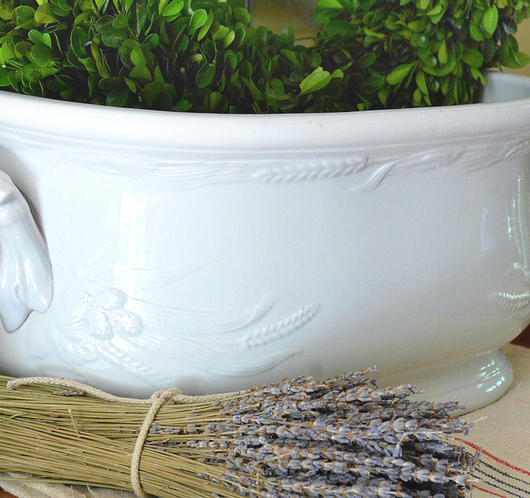
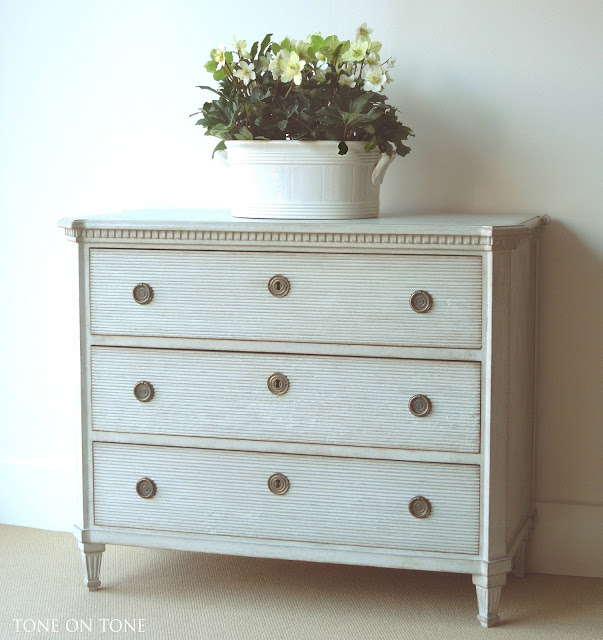
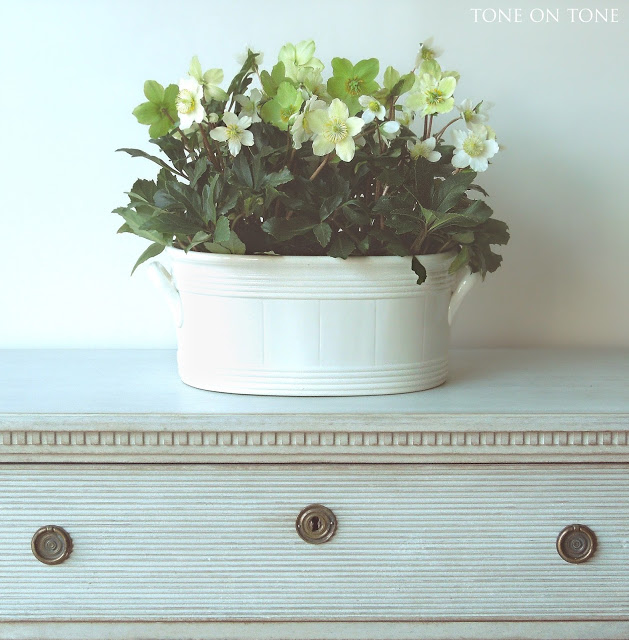
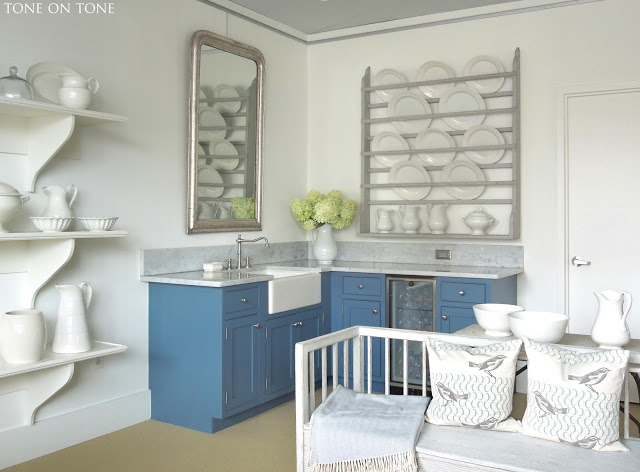
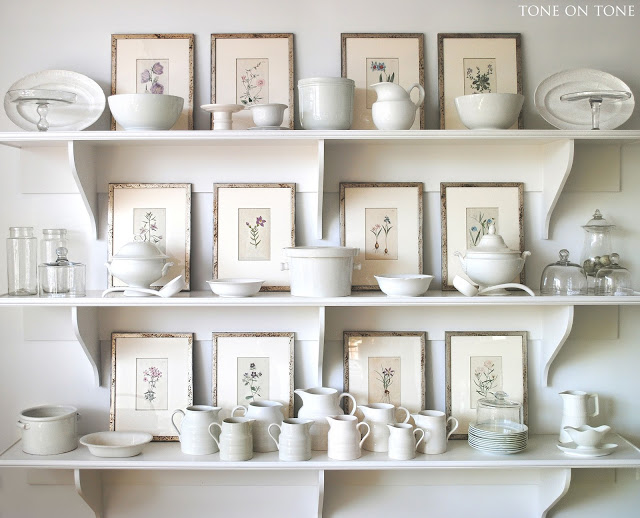
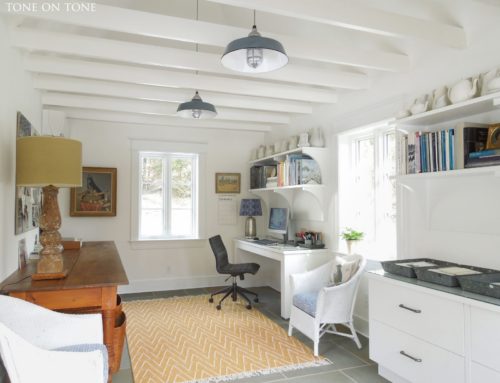
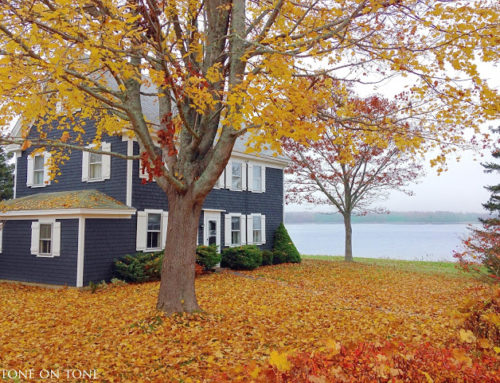
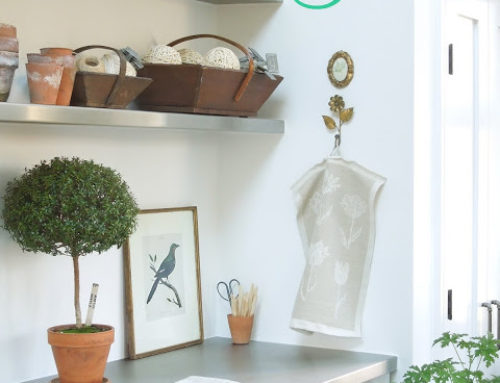
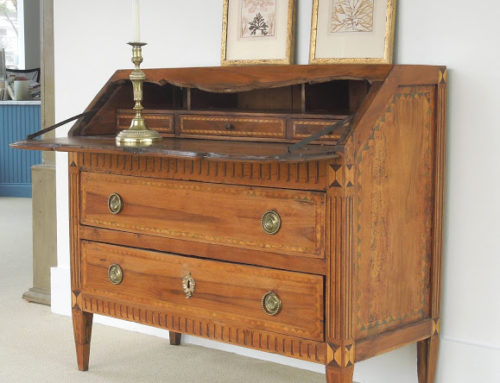
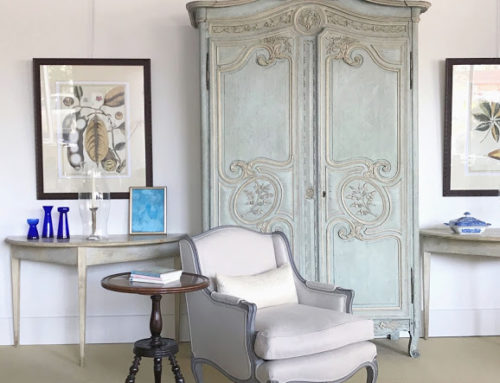
Loi, you have such wonderful pieces and thanks for sharing the history. I learned a lot.
Oh I so hope for more from Maine soon! I like ironstone but it's never been my thing. My friend P literally has a warehouse full of it. She is my collecting mentor 🙂 if she ever has a sale, I will let you know. I absolutely love that corner pine caninet.
Happy New Year!
Simply stunning. Wishing you a very happy 2016!
You are right Loi, the white Ironstone ware is the perfect antidote to all the colour that we have just been experiencing this season. It also makes a great foil for the plants, furniture, and fruit.
Hello Loi, You have really made me envious with your marvelous collection of white ironstone. I love this type of collection–it shows the great variety and importance of the ironstone, while featuring rarities of special workmanship and significance. If I had to pick a favorite, it would be the "sold' footbath–it has a pleasing shape and linear decoration, cleverly imitating a wooden tub.
–Jim
Loi, it truly does not get any better then this here with you.
The beauty, the history, the breathtaking placement.
I could scoop it all up and live soulfully with your amazing pieces.
See you soon.
Xx
Dore
ironstone is very pretty individually, but a collection is absolutely breathtaking!
Your home in Maine is looking stunning! Happy new year 🙂
Oh my Loi!….I cannot tell you how wonderful this post is…As you know, I have seen some of your exquisite collection in person in your shop and this post is truly like flipping through a "wish book". You not only have a most gorgeous collection, your displays of them are stunning. I find myself studying the way you display them throughout your home and shop. Then, what a surprise that you have featured my footbath!…You are the sweetest to do that!!…I was a bit overwhelmed!…and to think that I posted about it today too!!!….I look forward to seeing you soon!!…Hope you had a most wonderful Holiday!!!….and thanks for the wonderful history of ironstone!
Loi, thank you for the lesson on ironstone, I learned so much today! Your collections are amazing!!! You also display them beautifully. I am amazed at your collection! Happy new year!
What a collection! The white is so refreshing and would suit most homes and if I had the space I would start a whole new collection of pottery but I have to be strict and continue on my own collection I have going. It's already not very cohesive!! happy new year Loi!
The history of ironstone that you posted today is fantastic. I learned so, so much. Thank you dear friend.
xo
Patty
Your posts are always so inspiring. You make me want to start collecting Ironstone! You have some incredible pieces and you have such a modern way of displaying them so they don't look granny!! Happy New Year Loi!!
Loi, thank you so much for sharing some wonderful information about ironstone. I've collected it for years, after inheriting a lovely small vegetable tureen with lid and underplate that belonged to my grandmother. I'm a little obsessed!
Cindy
Edith & Evelyn Vintage
What an education and oh such gorgeous pieces. Love the soup tureen finials! Your furniture, of course, is the perfect backdrop for this collection.
You have an amazing collection of gorgeous ironstone, Loi! Love your comment that "more is more." Always so much beautiful inspiration in your posts!
Mary Alice
Loi, this is without doubt the best post on white ironstone. I learn from you with every visit, but the visual organization you have provided here is exceptional. I'm going to print off this post. The format would make an excellent presentation for my antique club. I don't have as fabulous a collection as you. You've inspired me to add more in 2016. With a birthday in January, perhaps a new piece is in order. '-)
Thanks again for this excellent post. I would love a shopping trip to DC. Happy, Happy New Year!
Loi your collection is simply breathtaking! I love seeing all of the various shapes, sizes, types that you have found over the years! Thank you so much for bringing us so much beauty!
xoxo
Karena
The Arts by Karena
New Years Thoughts!
Beautiful and quite an enviable collection you have there Loi! Also, as always, very impeccably styled:-). Happy New Year handsome! xx
Oh Loi this stunning collection of calm is what I need after you so beautifully said, too much color saturation from the holidays! I have a sweet collection myself and some of those pieces are so sturdy! Wishing you a happy day!!
Each piece is more beautiful than the next, but certainly they are most beautiful when displayed as a grouping. I quite like those angular ones. Perchance do you know the white paint color you used on the Great Wall of China? It's divine.
What an amazing collection. I have a hard time understanding those who don't like white. It's so calming and serene. I will definitely be back to look at all these photos and read through the post when I have more time. Right now I have to get back to work (am home for lunch)! Happy New Year to you, Loi.
Claudia
i'm dying. i'm dying. and not just from the glorious flood of white, but because of how it makes me fall in love all over again with blues and greys. right? they are such tight friends. i'm in love too with that blue striped runner on the table…is it vintage or is there a secret source? happy tuesday, china.
Loi, your post are spectacular! I learn so much and now I'm bitten by the Ironstone bug. Oh no, Michael is just going to roll his eyes at my new obsession! I'll let him know that you are the source of it! Have a great week and keep writing you amazing posts!
What a great post Loi, I really enjoyed this very much. What a terrific collection you possess, and it looks perfect in your shop as well as your home.
Oh dear Loi, my favorite 'china boy' in the entire world. . . . . . . . . . .your quote, ironstone being "the Tupperware of the 19th century" is such a perfect analogy. Your collection at the shop is exquisite – same in your Castine summer home. I collect white ironstone tureens, also bowls and plates, but right now I'm drooling over the Stilton cheese keeper! What an absolute beauty. I love Stilton, and my maternal grandfather, who owned a pub in Devon in the 1930-40's after he retired from the Coldstream Guards in London, always put a whole wheel of Stilton on the bar counter for Christmas – scooping out the middle and pouring in a bottle of aged port. It was his gift to the locals who frequented the pub! My mother of course told me that story – I always loved hearing it.
If Sarah (Texas) comes to D.C. to visit you – I'll come and meet her there! We've been trying to get together for several years – she is a lovely lady. We could have a great fun time. . . . . all of us!
Love and hugs dear friend – again the best of everything for this new year – Bob and I hope to see you again in 2016.
Mary –
Loi – you could be a photographer/stylist. Your photos are prettier than those in the magazines! You are so multi-talented. My photos are awful. I've tried to copy your "style" but cant – i have too much background junk/noise. I need to edit it all and become more quiet!!!!! haha! omg. I need help!!!!!!
Loi,
You have such an eye. I want to start a collection! You have collected some incredible pieces and I thoroughly enjoyed your helpful tips on collecting.
xo,
Karen
Hi Loi,
Yep! christmas was great. I love this post–learned a ton. My favorites are the more intricately molded pieces. xoxo Mary
Stunning Loi, I am in heaven and awe at your collection. Thanks for the lessons too!
Happy New year. xoxo Terri
Amei essa louça branca.
Quero te desejar um feliz 2016 que ele seja de grandes alegrias.
For ironstone lovers like me, this post splendid, beautiful and educational. Thanks, Loi.
"was" splendid. I must remember to proofread before I post, especially in the a.m. when I have not had enough coffee.
White is sweet relief after the red & green of Christmas. Thank you for the educational and inspirational tutorial! I need to pop in for a visit to Tone on Tone. It is New Year's resolution!
Wow Loi…sensory overload here!! Absolutely gorgeous, its like a breath of fresh spring air…ahhhhh!
Love it all….thanks for sharing and a very happy 2016 to you, may it be filled with much love, adventure, good health and laughter!!
Impeccable collection, styling and photography!
Impeccable collection, styling and photography!
Hi Loi,
A Happy, Healthy and Sparkling New Year to you and Tom! The collections of white ironstone you show us look beautiful. I have never come upon it on my treasure hunts, but when I do I am sure I will take it home with me.
Madelief
Happy New Year Loi! What a beautiful collection! Its so clean and simple yet elegant at the same time. I think my old house needs a bit of ironstone too! xo Karolyn
Happy New Year Loi,
This is such a wonderful way to start the new year. Your collection makes me want to add to my own collection. This post is fantastic in its presentation. Love the way you ended the post with a quote. I wish I could visit Maine and your shop. Happy hunting for more new pieces~
Regards,
Sarah 🙂
Harmony indeed, hello my friend Loi
Hello Loi,
The white ironstone all looks so beautifully displayed in your various cabinets. The oil paintings peeping out add such added charm and warmth. Wishing you a very Happy New Year and a year full of joy and adventures
Helenx
Clean. Simple. Elegant. These words describe both the ironstone and your home. I have long admired your style Loi and this post is no exception. Your vignettes and photography are exquisite! I collect ironstone as well (though only pitchers… so far!) and loved reading this post.
Sheila Irwin
http://www.maisondecinq.blogspot.com
Happy New Year Loi!
I've enjoyed seeing your wonderful collection of ironstone and learnt so much too – thank you.
My favourite pieces are the banded foot bath and the cheese keeper.
There would be so many uses for both pieces apart from being decorative .
I'm in New Zealand and sadly I can't find ironstone here.
I'm also swooning over your Swedish Gustavian desk and chest plus the rug – just what I'm looking for!
Both your home and shop are gorgeous!
I'm following you now – I'm so inspired!
Shane
Wishing you and Tom a joyful 2016. Loi your description of Hamony in White is perfect. You truly have the most beautiful and huge collection I've ever seen and I love and lust after your covered soup tureen.
xoxo,
Vera
i do believe i have just experienced my first ironstone porn post. crowns, watering can, inkwells……….oh my!
here in atlanta enjoying antique shows. on my list for the shop is ironstone, there is much here but nothing compares.
wishes for a stellar 2016 to you and tom!
debra
Loi, Will you marry me?
What a wonderful and stunning collection!
White ceramic and ironstone – sophisticated and simply timeless.
Cannot have enough of!
A very harmonic post to start the year, dear Loi.
xk
Congratulations on being featured in Martha Stewart Living magazine!! I knew the feature was about you the minute I saw the first photos, even before I read your name.
Claudia
Your photos are stunning! Such a lovely collection here. A Breath of Fresh Air, Mary, sent me over here.
Loi, First I have to say Congratulations and then I must say, it is so well deserved that your home and your talents are being recognized. When I visit your blog I feel as if I had a mini vacation. I feel serene, relaxed and quiet. I love my home to reflect peacefulness and your home does that for me in every nook and cranny.
xo and Happy New Year,
Kathysue
My delay in commenting is due to the fact that this post absolutely took my breath away – your photos and vignettes, and the ironstone pieces, are truly stunning. And I am loving the mix of wood and painted furniture. I actually had a client ask if they could do white chairs with a 'brown' wood dining table and I sent them two photos of your (current and past) dining rooms! xoxo
I love how you educate us and inform us about this marvelous pieces Loi. I will be on the look out for sure! I smiled at the "tupperware" connotation you mentioned! ;-=)
I have been collecting ironstone and other white tureens for a few years. I get most of them at Goodwill or yard sales. I recently acquired an interesting piece and wondered if you might know anything about it. It's a two-handled covered tureen (but with no place to put a ladle) and it has bas-relief designs of various castles. It has no markings. The handles are faux bois. Any idea how I can learn more about this piece?
Wow, I really like your post because the information which you given in this blog is really extra ordinary.
Duct Cleaning
Excellent and very exciting site. Love to watch. Keep Rocking.
wholesale fittings